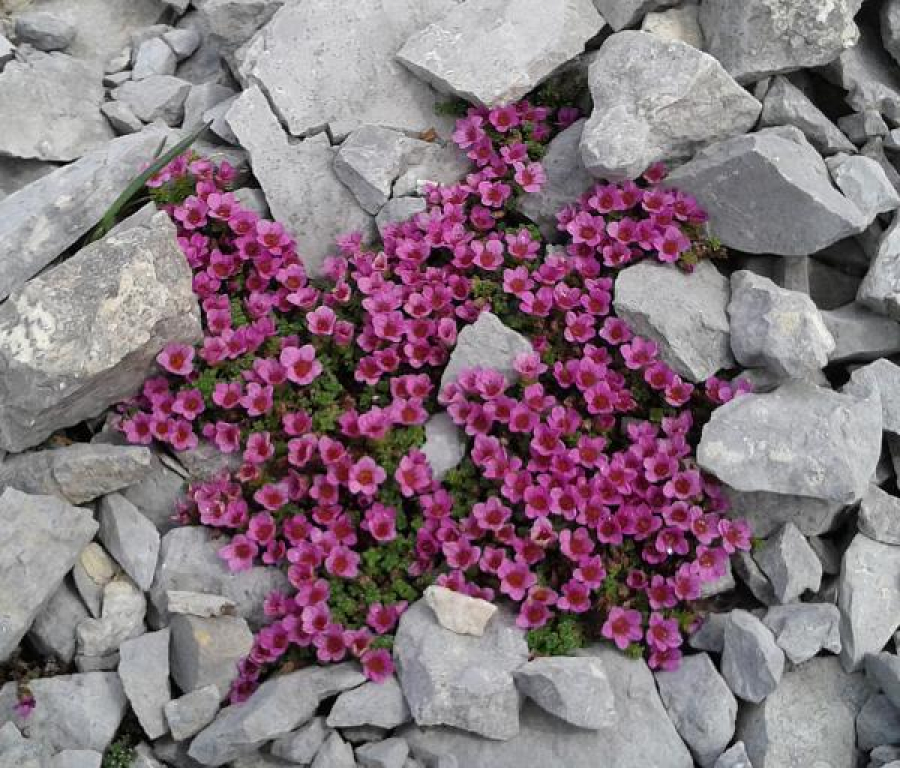Purple mountain saxifrage, S. oppositifolia, has a holarctic distribution, found on high-alpine mountaintops as well as the high Arctic tundra. Plants form tiny evergreen rosettes on trailing stems, forming flat mats. The foliage is lime-encrusted, opposite and held in four-rows. The solitary, 1 cm diameter flowers are various shades of pink to purple. They bloom within weeks of snow-melt in the wild while in cultivation, they bloom March to May.


Range of colours found in Saxifraga oppositifolia
It is the highest known elevation plant in Europe (growing in the Alps at 4505 m elevation) and the highest north latitude plants in the world growing at the north end of Greenland at 83 N. Generally, those that grow atop mountains are restricted to limestone substrates while those from the high Arctic are not as restricted.
As early as March in mild regions to as late as July in natural high-elevation or high latitude areas.
While this species is found across the northern hemisphere, the European forms are the easiest in cultivation while the North American forms are extremely difficult. While in the Arctic, plants grow in full sun, in cultivation part shade is best, especially if there is early morning or late afternoon sun. The media needs to have excellent drainage yet retain moisture as the plants are not particularly drought-tolerant. This species performs best in alpine troughs or crevice gardens. Limestone substrate and tufa are ideal. It is hardy to zone 1! However it can grow to as far south as zone 7-8 but only in cooler-summer regions of Europe or coastal Pacific northwest.

Saxifraga oppositifolia growing in the Swiss Alps
Cuttings may be taken in mid-summer and rooted in pure sand. Plants may also be grown from seed, requiring about 3 months of stratification.

